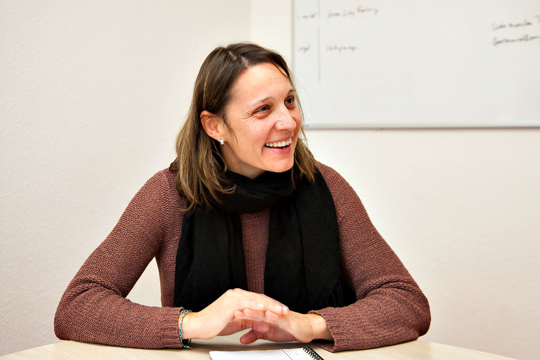Talking about working
Freiburg, May 17, 2018
What information has to be passed on at which time? What does a department do? And just who does what? Every day at the University of Freiburg hundreds of work processes happen - in teaching, research and administration. But how can we map those processes and improve the service? How can an institution ensure that all the wheels in the system are meshing effectively? 31 institutions of higher education in Germany, Austria and Switzerland have joined together to form the “Hochschulnetz Prozesse” network. A co-founder is Dr. Claudia Breuer, who is responsible for process management at the University of Freiburg. Breuer, an economist, spoke with Rimma Gerenstein about why it’s worth taking regular stock of your own work and why process management is as logical as making coffee.

Photo: nikkytok/Fotolia
Dr. Breuer, you are responsible for process management at the University of Freiburg. What is that exactly?
Claudia Breuer: That means first of all that I talk to people a great deal about their work - and not about what they do, but the ways in which they do it. Process management is about measuring business processes and determining via which structure a given process - for instance, introducing a new degree program - goes through the corresponding stages. I sit all the people involved down at the table and ask them: What is the role of your department in a particular process? And how do you contribute knowledge and ability to help it work? They know what the goal is that they want to achieve. The question is - how to get there.
But there must be differing ideas about that - depending on who you ask.
Correct. That is one of the biggest challenges in process management: finding a solution which enables smooth processes and keeps the largest number of participants happy. People used to think: “I’m in department x, my job is y, and that’s it.” Today there is ever-greater specialization; departments have to work together to provide better services. That’s why it’s necessary to think beyond your own department. The question is how to organize your work better so that both your colleagues and your customers benefit. Operating with this comprehensive view of the organization usually means more work initially.
More work: How do people respond to that?
I think we’ve all been there - somebody asks if we couldn’t do some task a different way, and the immediate reaction is: No, stop right there! No-one likes leaving their comfort zone. But at the end of the discussion, most people say: “It’s not really much more work.” On top of that, one mustn’t view integrated work practices as team x having to outperform team y. It’s give and take. I might do more in one process, but in the next one my colleague will.

“It’s a question of logic, and it goes step by step:” Claudia Breuer compares process management to making coffee. Photo: Ingeborg F. Lehmann
Which processes do you help with?
Basically, all the processes which affect the university as a whole and which are not yet clearly set out. I currently have about 20 to 30 processes on my desk. They include for instance joint appointments with non-university institutions, changing organizational structures, and the adaptation of quality assurance in teaching to the system accreditation model. Up until a few months ago I was very busy with the Unicard, where both the hardware and the software had to be completely renewed. There were various questions: How are the data in the central database prepared, how do the subsystems - for instance, the student cafeteria and the University Library - connected, and what happens when the information has to be updated? I make a diagram of what is there, what is missing, and how we could organize the work tasks. I use process diagrams for this. At the same time you have to watch out for the dangers of pretty pictures.
What do you mean?
It can easily happen that an institution translates all its standard processes into lovely diagrams - but the real question is: Will they be accepted and followed? Or are their inconsistencies, for example, because there’s a lack of time? There shouldn’t be a big discrepancy between the diagram and the realization of the process itself.
Every process is different - but are there some steps which are always the same?
Of course. Just think of how you would go about making yourself a cup of coffee. It’s a question of logic, and it goes step by step. The key questions are: Who is involved, what are they doing, and when are they doing it? You don’t need to portray that in a beautiful process diagram; you can enter it on a chart or write a list. That gives you a solid structure and a good overview. When you have described the status quo, you can go a step further: Is there anything I can leave out? And if not, is there anything I can simplify? Can I standardize or automate anything, create a regularity? These questions are usually easier for an outsider to answer.
What is next on your agenda?
We are working on making models available which will represent the most important processes at the University of Freiburg. It will be like a roadmap which shows the paths and offers them as a download. People will be able to use them for orientation and to adapt the models to suit their own requirements without too much effort. For the area of academic affairs we already have a number of key processes on paper - now we will look at research and administration.

